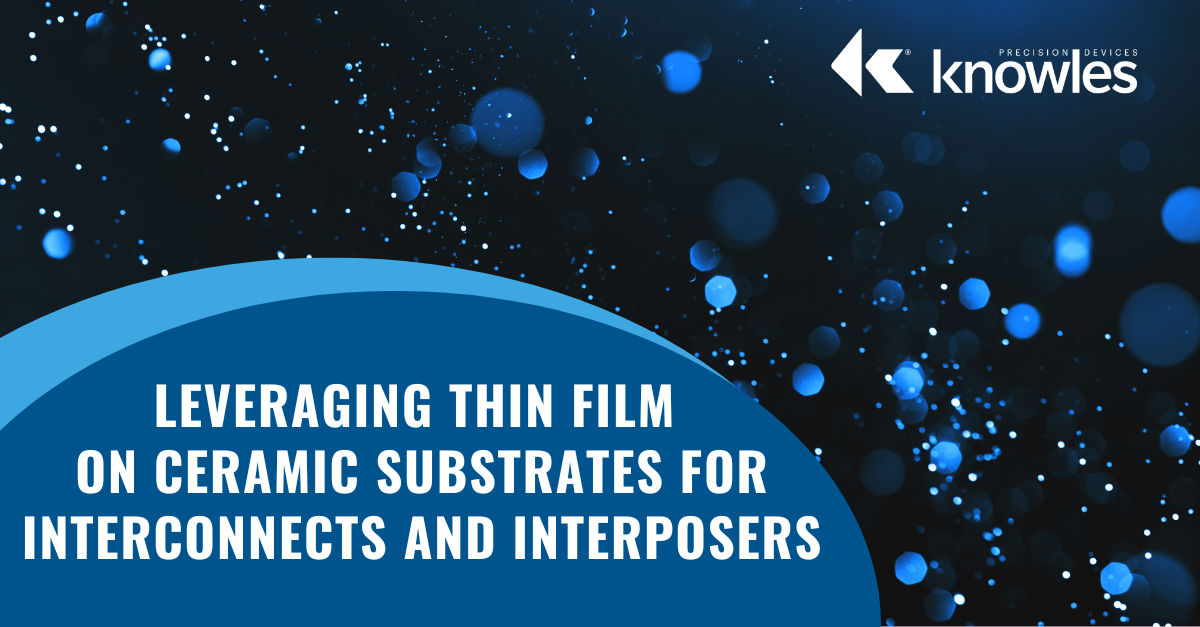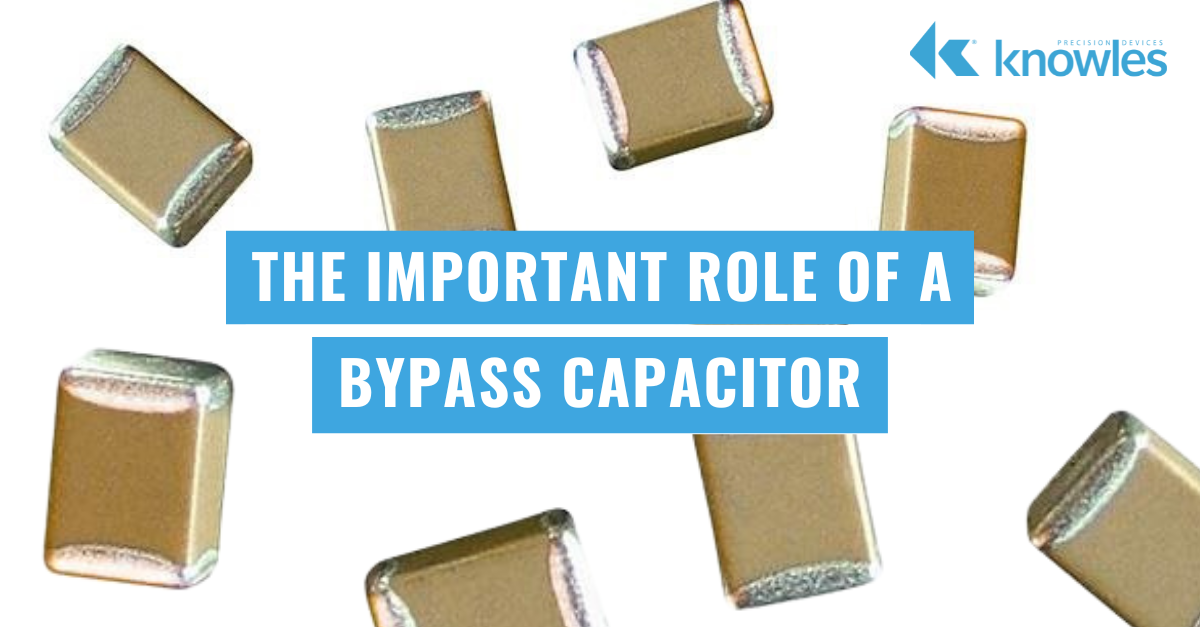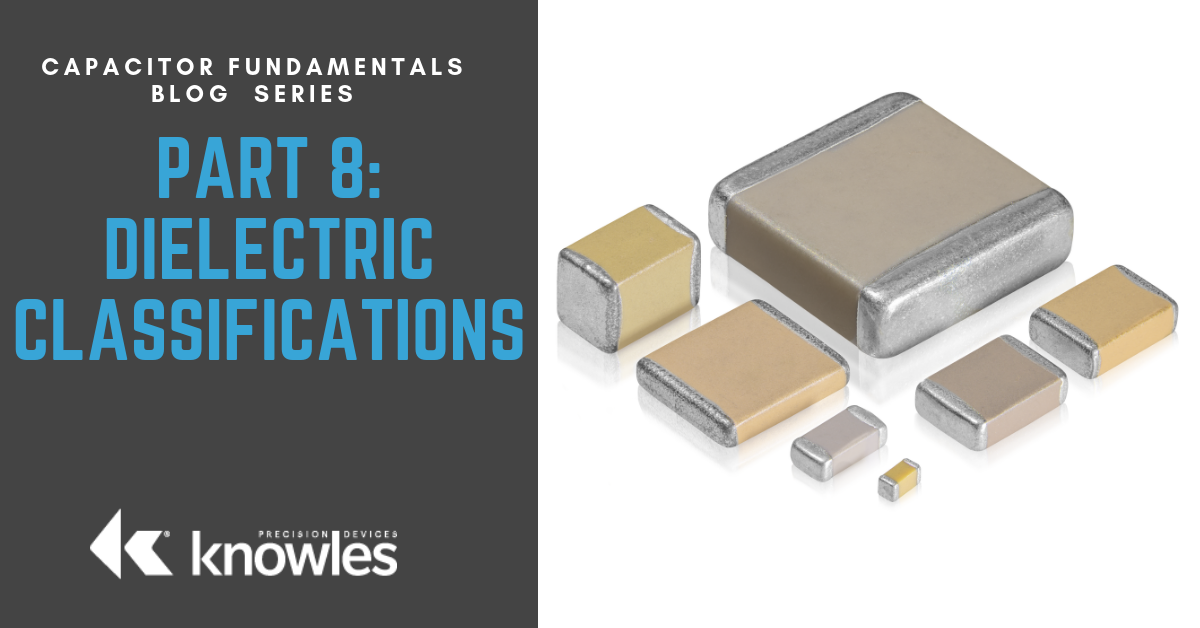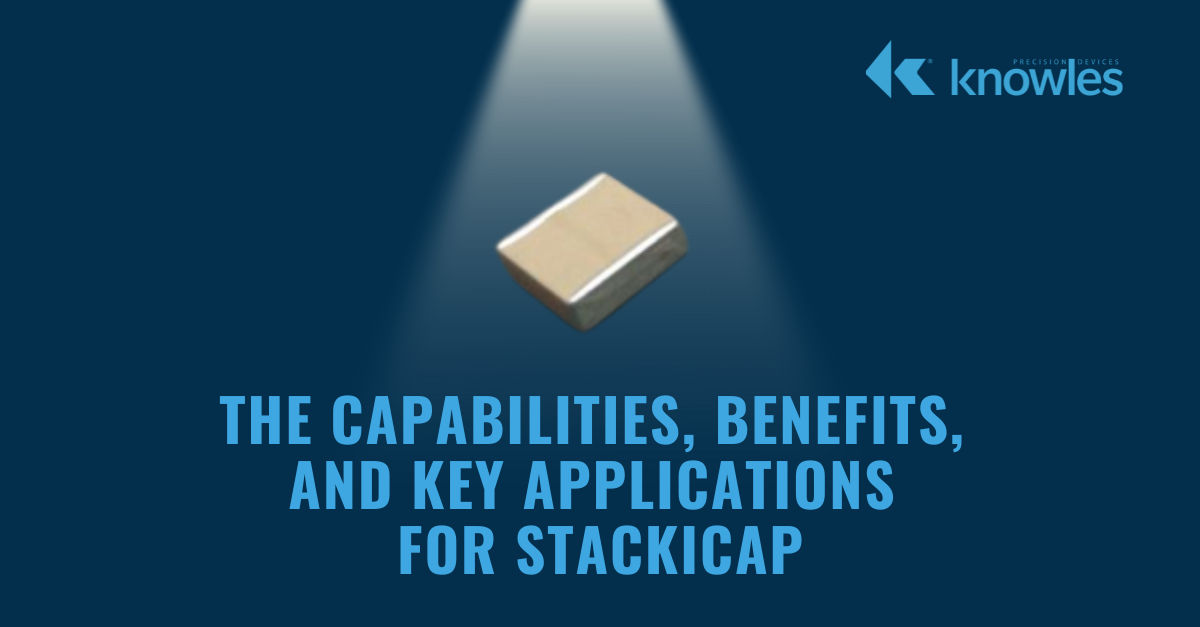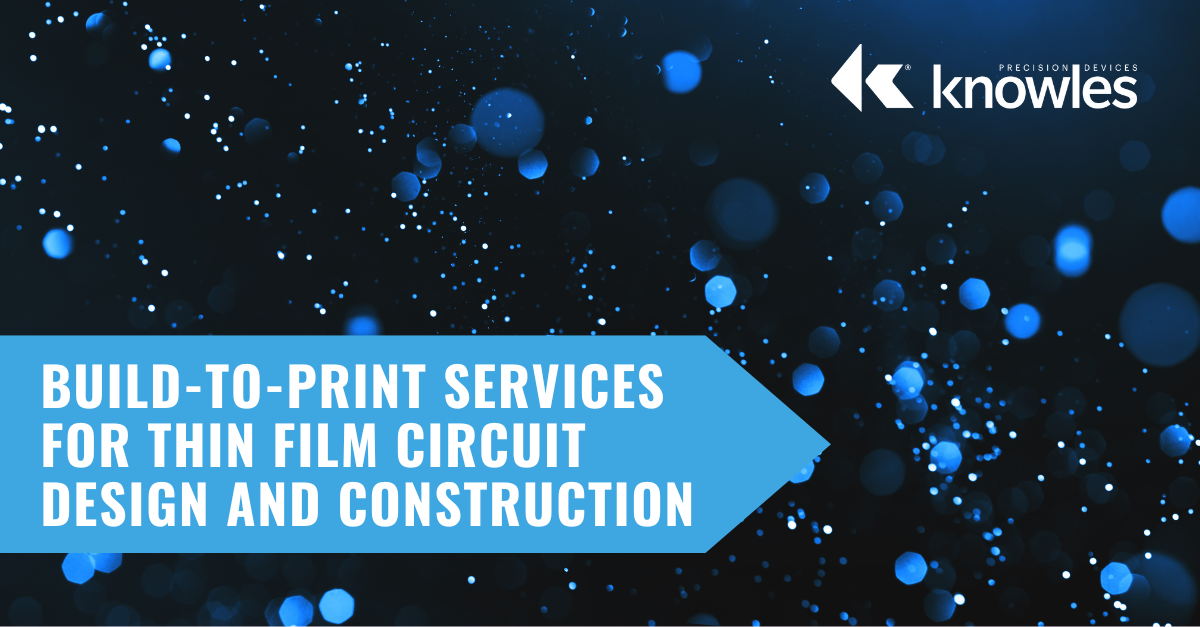Welcome to the Capacitor Fundamentals Series, where we teach you about the ins and outs of chips capacitors – their properties, product classifications, test standards, and use cases – in order to help you make informed decisions about the right capacitors for your specific applications. After describing dielectric classifications in our previous article, let’s discuss capacitor test conditions and electrical properties.
Capacitor Fundamentals: Part 9 – Test Parameters and Electrical Properties
Topics: Capacitor
One of the things all technical disciplines excel at is creating terminology that can trip up those who are not accustomed to speaking the language every day. Take the title of this article for example. These three words sound similar and are definitely inter-related, but they are not inter-changeable.
Topics: RF and Microwave
Leveraging Thin Film on Ceramic Substrates for Interconnects and Interposers
Innovation in advanced packaging was driven, in part, by advancements in interposer design and construction. Interposers are electronic components designed to sit within a package and connect different circuits and components via interconnects. Thin film interconnects are standard in high-frequency components and subsystems where transmission line widths are small (i.e., .005” and under) to improve overall system performance. They also support high-power applications where thermal conductivity is more of a concern and certain materials like beryllium oxide and aluminum nitride are more commonly used.
Topics: Build to Print
Electronic devices provide the tools we need to power the world. From cell phones to modern vehicles to scientific equipment to the appliances in our homes, we rely on electronics to improve and even lengthen our lives. All electronics depend on clean power, and the bypass capacitor is crucial in ensuring devices safely meet their power specifications.
Topics: Capacitor
Capacitor Fundamentals: Part 8 – Dielectric Classifications
Welcome to the Capacitor Fundamentals Series, where we teach you about the ins and outs of chips capacitors – their properties, product classifications, test standards, and use cases – in order to help you make informed decisions about the right capacitors for your specific applications. After describing linear dielectrics in our previous article, let’s discuss the different types of dielectrics.
Topics: Capacitor
Thin Film Integrated Passive Devices at Knowles Precision Devices
Resistors, inductors, and capacitors are the most common passive electronic components; they’ve long been available at different price points with different capabilities. Heightening expectations for performance in today’s advanced electronics environment mean we need equally advanced processes for creating components.
Topics: Build to Print
Welcome to the Capacitor Fundamentals Series, where we teach you about the ins and outs of chips capacitors – their properties, product classifications, test standards, and use cases – in order to help you make informed decisions about the right capacitors for your specific applications. After discussing ferroelectric ceramics in our previous article, let’s describe some interesting characteristics of linear dielectrics.
Topics: Capacitor
How The Shift to SiC-Based Semiconductors in Military Power Supplies Affects Capacitor Selection
To protect people and critical equipment, military-grade electronic devices must be designed to function reliably while operating in incredibly harsh environments. Therefore, instead of continuing to use traditional silicon semiconductors, in recent years, electronic device designers have started to use wide band-gap (WBG) materials such as silicon carbide (SiC) to develop the semiconductors required for military device power supplies. In general, WBG materials can operate at much higher voltages, have better thermal characteristics, and can perform switching at much higher frequencies. Therefore, SiC-based semiconductors provide superior performance compared to silicon, including higher power efficiency, higher switching frequency, and higher temperature resistance as shown in Figure 1.
Topics: Capacitor, Military and Aerospace, High Reliability
The Capabilities, Benefits, and Key Applications for StackiCap™ MLCCs
From industrial to automotive to aerospace applications, power electronics are demanding higher capacitance in smaller packages. Therefore, to meet both capacitance demands and size requirements, electronic designers simply cannot continue to add more capacitors. While capacitor stacking is an option, many stacked assemblies are still quite large and stacking often introduces new failure modes, such as piezo electric cracking (Figure 1).
Topics: Capacitor
Build-to-Print Services for Thin Film Circuit Design and Construction
As the name implies, “thin film” is a precisely deposited layer of material used to fabricate electronic components. “Thin” can mean as little as a fraction of a nanometer thick. Circuits constructed with thin film are used in a wide range of electrical and optical applications, but they are most advantageous when high-frequency performance, tight tolerances, thermal conductivity, and long-term reliability are paramount concerns. Particularly in the high-frequency microwave space, small size, line definition, and repeatable construction offer significant performance benefits.
Topics: Build to Print



